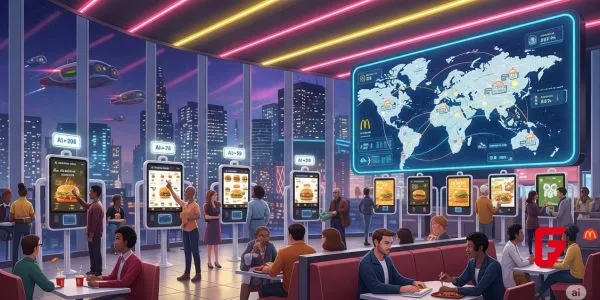The fast-food giant McDonald’s is making waves in 2025 with a bold expansion of artificial intelligence, setting the stage for a technological revolution that spans more than 40,000 restaurants worldwide. But this isn’t about flashy robots flipping burgers or gimmicky gadgets—India will anchor the transformation, emerging as a global hub for AI-driven data governance and digital engineering.
India: From Outsourcing to Innovation Powerhouse
In a move that underscores the country’s ascent from a low-cost outsourcing center to a leader in high-tech strategy, McDonald’s is establishing its largest global office outside the U.S. in Hyderabad. This new capability center isn’t just about scaling operations—it’s about creating the digital backbone for McDonald’s future. While headcount is growing, most of the massive investment will funnel directly into groundbreaking technology, not just more people.
Order Perfection at Scale: How AI Will End Fast Food Frustrations
At the heart of this shift is AI-powered order verification. Currently, 400 Indian outlets use computer vision to check every bag before it reaches the customer, minimizing mix-ups and unsatisfied meals. The plan? Bring this “order guardian angel” to 40,000 McDonald’s worldwide by 2027. These cameras, coupled with next-gen voice recognition systems, are poised to erase the era of botched orders and endless “Did you get my fries?” moments.
Personalization, Predictions, and Revenue Growth
This isn’t just about accurate orders. McDonald’s is layering AI across its digital platforms to create a seamless, hyper-personalized customer experience. Every menu screen and app suggestion is driven by more than 120 real-time data points—from inventory levels and weather to loyalty status and time of day.
When stocks of chicken burgers run low but beef is abundant, the system adjusts recommendations on the fly, minimizing waste and maximizing profit. Customers get dynamic deals and tailored bundles that actually matter to them, not just generic upsells. AI-enhanced campaigns have seen a 38% acceptance rate—double the impact of past efforts.
The numbers tell the story: with a current base of 175 million global loyalty members, McDonald’s is aiming for 250 million by 2027. Add in improved accuracy and customer satisfaction, and it’s no surprise analysts forecast up to $500 million in annual savings, just by streamlining operations and reducing waste.
Behind the Scenes: AI Keeps the Kitchen Running Smoothly
But perhaps the most crucial innovation is invisible to customers. Every fryer, ice cream machine, and grill in a future McDonald’s will be fitted with AI sensors. These “digital watchdogs” forecast failures before they disrupt service, slashing downtime by up to 60%. Equipment malfunctions—a century-old pain point—are finally meeting their match.
And it doesn’t end there. AI powers:
Automatic labor scheduling, balancing thousands of stores in real-time.
Voice-guided checklists for kitchen staff, ensuring consistency and compliance.
Advanced supply chain integration, matching demand forecasts to stock levels and adjusting menus on-the-fly across the globe.
AI with a Human Touch: Culture Over Robots
Forget about “robots taking jobs.” McDonald’s executives repeatedly emphasize that AI investments will be used to empower workers, not replace them. Technology will relieve repetitive tasks, let staff focus on customer interactions, and unlock new value across the company. India’s engineers aren’t just writing code—they’re helping serve a better burger.
McDonald’s AI journey shows that fast food’s future isn’t just about convenience—it’s about intelligence, efficiency, and personalized delight, helmed by human creativity in India and beyond.














